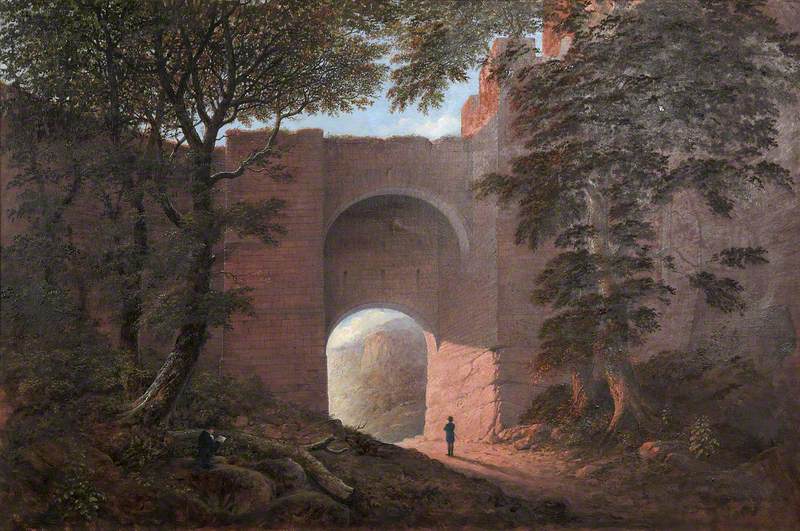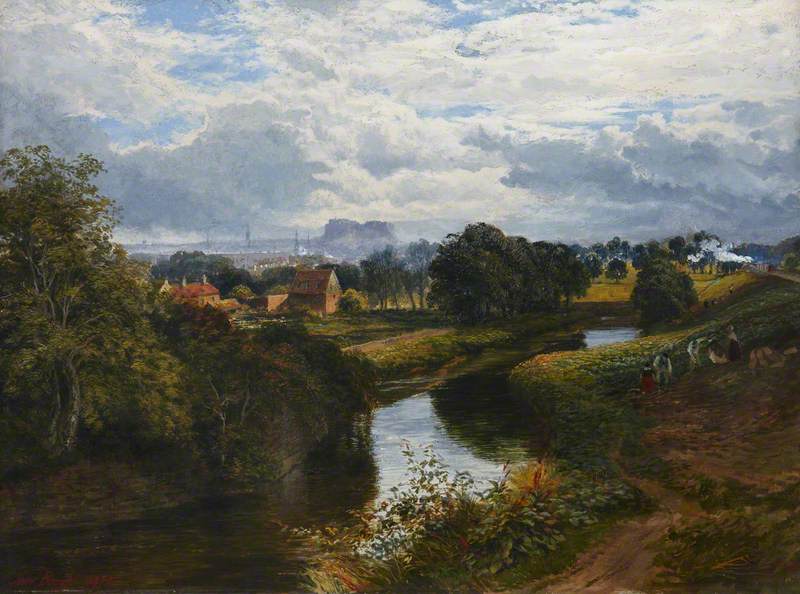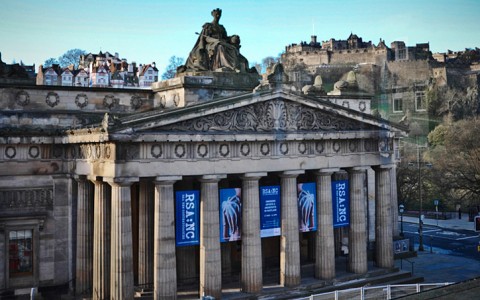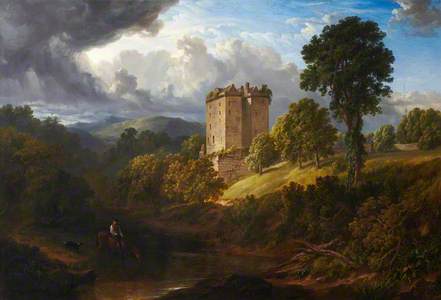Based in Edinburgh, the Royal Scottish Academy of Art & Architecture is Scotland’s oldest surviving artist-run organisation, with collections dating back to 1831.
Sandy Wood, Collections Curator, has chosen some of his favourites, including works from the 2014 exhibition ‘Your RSA Paintings: Your Choice’.
The exhibition, which ran until April 2015, showcased beautiful Scottish landscapes and thrilling stories, and included paintings chosen by the public.
1.
A Dream of the Nor' Loch and Edinburgh Castle
c.1904
James Paterson (1854–1932) 
This fascinating and perhaps apocalyptic work imagines a ruined Edinburgh Castle above the historic Nor’ Loch.
The loch was designed as a defensive waterway but became a cesspool of all sorts of human waste. Its fumigations were so strong they were believed to cause hallucinations. It was drained in 1820 to make way for Princes Street Gardens.
James Paterson was one of the famous group of Scottish painters who came to be known as ‘The Glasgow Boys’.
2.
Robert Burns at Rosslyn Castle
(painted from a sketch by the artist's father, Alexander Nasmyth)
James Nasmyth (1808–1890) 
Famous Scottish artists and historic sites are married in this charming painting.
Robert Burns is bathed in sunlight as Alexander Nasmyth sketches in the shadows on the left.
Nasmyth remembers the day: ‘One morning in the early part of the summer of 1787 we met at my house…the morning was fine and we walked out to that romantic spot, it was the first time my friend had been there…This, one of the days of my life that I look back to with intense pleasure.’
3.
In 1567, Mary Queen of Scots was besieged by rebel Scottish lords while under the protection of Lord Borthwick at his castle outside Edinburgh. She famously escaped dressed as a page boy through a narrow window.
Historic castles and country homes are a popular subject in the collection and Scotland’s turbulent history lends them a romantic and thrilling identity.
Robert Gibb was one of the first Scottish painters to practice outdoors and this was one of the first works to enter the RSA collections.
4.
In 1691, William III offered Highland clans a pardon after the Jacobite uprisings of 1689.
The Chief of Glencoe was late in taking the oath of allegiance and John Dalrymple, Secretary of State, sought to make an example of him.
Soon after, troops were billeted on the MacDonalds of Glencoe and one of the bloodiest massacres in Scottish clan history followed.
Thirty-eight men were killed, while 40 women and children died of exposure after their homes were burned in February 1692.
5.
The Battle of Bannockburn
1850
William Allan (1782–1850) 
Robert Bruce’s victory over the English army at the Battle of Bannockburn, 700 years ago, was a triumph against all odds and inspired many works of art and literature.
William Allan began this spectacular monumental painting in 1848. It remains unfinished, having been discovered on his easel at his death.
Abbot Bernard of Arbroath can be seen on the hill to the right. He carried the Scots army’s talisman (the Monymusk Reliquary) into battle, which is now in the collection of the National Museum of Scotland.
6.
Lamlash Bay, Isle of Arran
1865
Waller Hugh Paton (1828–1895) 
The outstanding beauty of the Highlands and Islands drew many artists in the nineteenth century.
Waller Hugh Paton created works of spectacular detail in the Pre-Raphaelite tradition, and was the first Scottish painter to work entirely in the open air.
Lamlash Bay, Isle of Arran was completed in just a week towards the end of September 1865.
The atmospheric union of drama and tranquillity make this one of my favourite landscapes in the collections.
7.
William McTaggart is arguably Scotland’s most famous landscape painter.
He was born in Campbeltown on the Mull of Kintyre. In later paintings, like this one, he wanted to represent the harmony of people and nature through impressionistic techniques.
Fellow artist James Caw said he painted the sea ‘with a passion and insight, a profound knowledge of nature and an assured mastery of expression, which makes him incomparable’.
8.
View of Edinburgh from Bonnington
1875
Samuel Bough (1822–1878) 
The puff of a steam train can be made out to the right of this painting. Between 1840 and 1865 the Victorian railway boom created unparalleled access to all areas of Scotland, allowing artists to discover its landscape.
Sam Bough was known to complete paintings in a single day. His drawing ability made him a master of capturing cloud and light and he could skilfully arrange compositions at the drop of a hat.
9.
George Reid shows how understated simplicity of composition and tone can realise a beautiful image.
Reid visited Holland in 1866 and the influence of the Dutch school is apparent in this work, with its greyish light, careful tonal gradation and solemnity.
Sandy Wood, Collections Curator, Royal Scottish Academy of Art & Architecture
Editor's note: This story first appeared on the BBC Arts website. The BBC is an Art UK project partner.
Visit the RSA’s Facebook page: http://on.fb.me/1hib9p4 or website: http://bit.ly/1dAPIjW

















